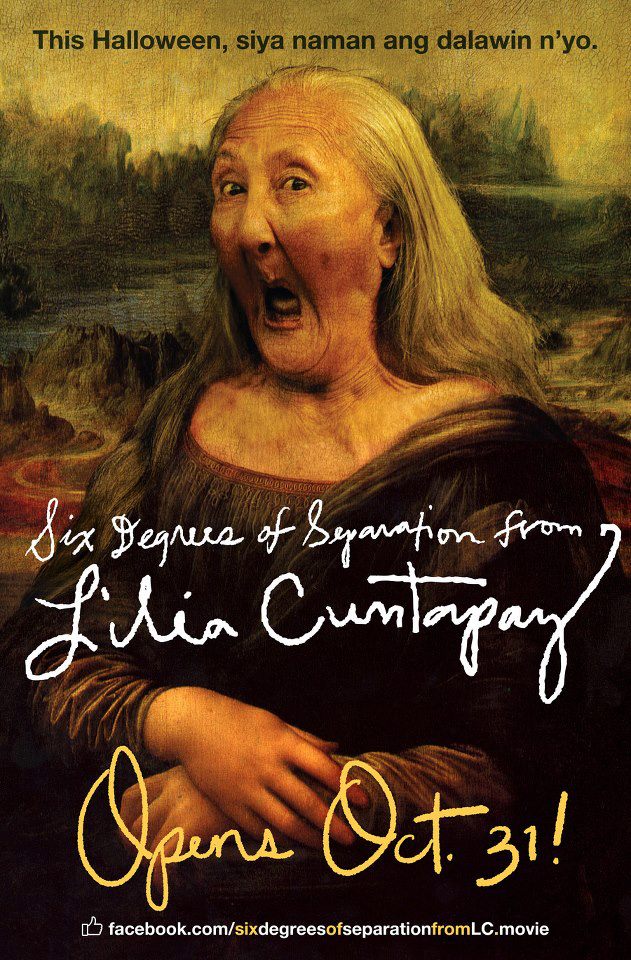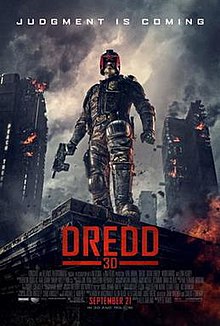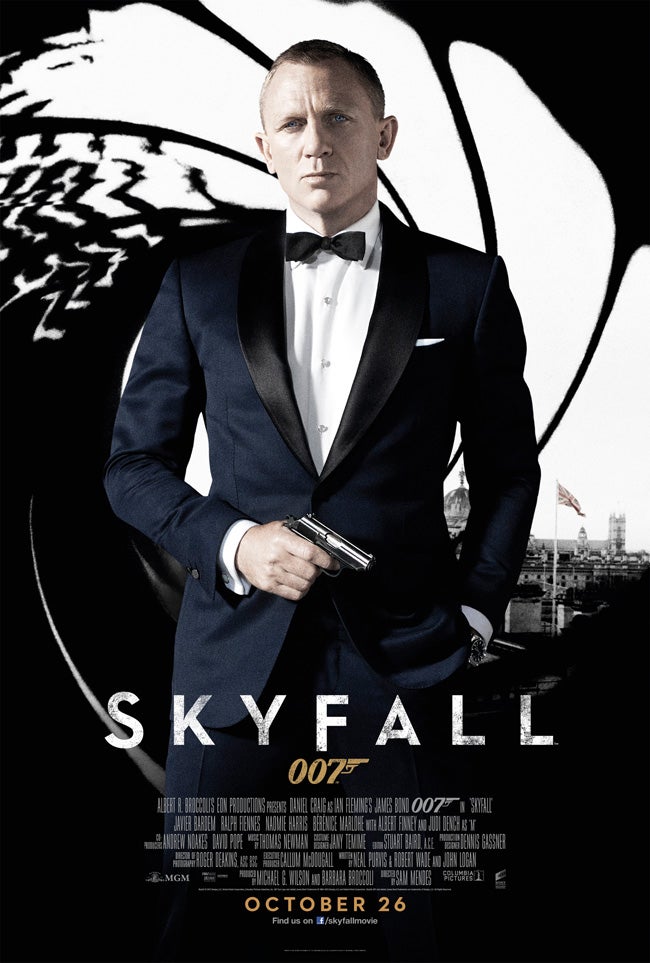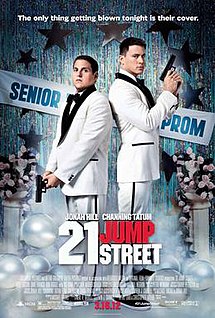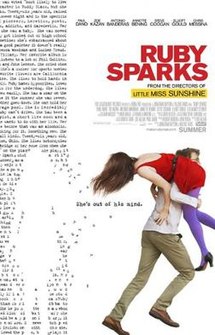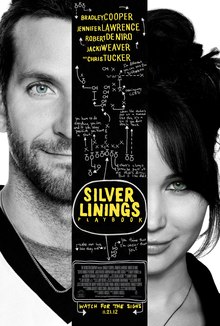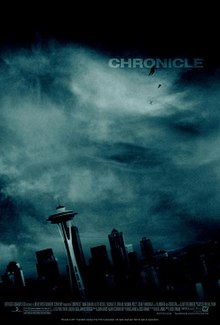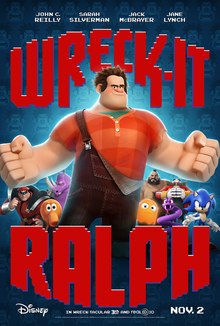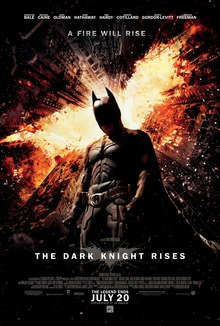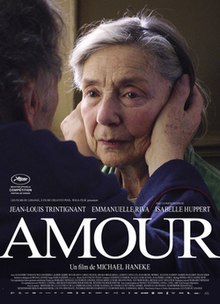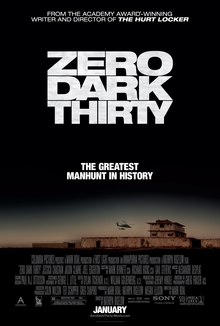This may have been two years in the making, but here is the revised list of my 20 favorite movies released in 2011, including ones that didn't make it to Philippine release. I'm making this revised list to count the movies worth revisiting or acquiring a copy of in case you missed them--especially since most of these movies have found their way to DVD or on Netflix. My ranking is based on their personal effect on me and of course, I've added merits on the cinematic effort placed into making the movie happen. I've added such personal biases and noted them down so you'd know if this movie would suit your taste.
1. Weekend (not screened in 2011)
This little indie masterpiece has won several accolades. What would probably put you off from watching Weekend is that it's an indie and it's a gay indie. It seems to have been made for a certain niche only, but to think such would be to not give this film a chance as that is what makes this movie stand out. It exactly discusses in brilliant dialogue how the heterosexual partners deride homosexual ones and the universality of love. To box Weekend as a gay indie movie is to deny it of its resonance because if you pay attention to its dialogue, it's an apparent eye-opener the way Brokeback Mountain could only dream of becoming.
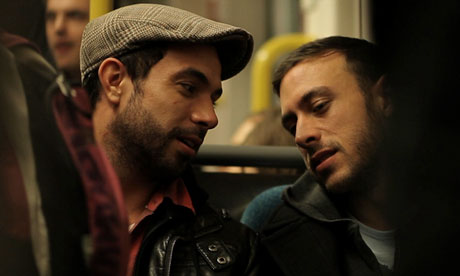 |
After this bus ride is one of the most intense dialogs
about love ever delivered in cinema |
2. Bridesmaids (previously number 1)
This Judd Apatow blockbuster smash will be forever resonant. Bridesmaids is one of those movies would usually use as a benchmark to other comedies. "Hey, do you know Pitch Perfect, it's a riot." "Well, it's not as funny as Bridesmaids." "Oh, why do you have to say that?" Bridesmaids feature fully fleshed out characters, some emotional depth, and a resolution that's catered to Hollywood pleasure without the problematic possibility of being cheesy.
 |
| One of the most hilarious exchanges in Bridesmaids |
3. My Week With Marilyn previous (not screened in 2011)
I am big fan of Marilyn Monroe and before watching this, I've already taken an interest in Michelle Williams' work after having seen her in Blue Valentine. So this marriage of Michelle and Monroe was a cinematic orgasm for me. And what was so great about it? Williams managed to transfigure herself to Monroe: posture, speech, acting, makeup, costume, walk, down to the smallest rasps in Monroe's lines. It was akin to watching Monroe rise from the dead and back to the silver screen. Williams' performance alone is enough to engender you to watch this movie, but the dialog, the storyline, and the cinematography was also fantastic. And wait till you see Williams dance the way Monroe does. It's breathtaking.
 |
| This scene completes Williams' transfiguration to Monroe |
4. Drive (previously number 3)
Ryan Gosling. Carrie Mulligan. Walter White with hair. A thug named Standard. A really beautiful ginger. The soundtrack. The visceral action pieces. The car chases. The gun assaults. I can go on, but what makes Drive so damn good is the fact that Nicolas Winding-Refn managed to blend all these seamlessly, anchored by Gosling's central performance that required like 5 lines of dialogue! Heck, his character doesn't even have a name.
 |
| Who doesn't recognize this jacket? |
5. The Artist (not screened in 2011)
Whether it's a gimmick or pure cinematic genius, The Artist accomplished to be a love letter to genuine filmmaking. And it doesn't hurt that it sends a message of adapting to change, all while being buoyed by speech cards and magnetic performances by Jean Dujardin and Uggy the dog. In the modern times of dizzying CGI and sophisticated storytelling, The Artist's simplistic storytelling and silent movie treatment stands as a refreshing cinematic experience first and an Oscar Best Picture second.
 |
| One of the cutest scenes in The Artist. Awww, Uggy |
6. Contagion (previously number 4)
There were so many brilliant performances in Sodebergh's outstanding ensemble medical horror slash docudrama slash social commentary piece given that it's headlined by an ensemble cast, but I am most moved by Jennifer Ehle's participation and next by Winslet's dedicated medical worker skit. Then you also have Paltrow's death scene which to most people was a treat. Let's also not forget Jude Law's turn for the evil blogger stunt. Contagion was the sort of slow-moving docudrama that polarized its audience, mainly because of how slow it unfolded and how it killed off its cast, losing central POVs along the way, but it works as a social commentary and a riveting medical drama detailing how easily our world can collapse into chaos because of a Contagion and various capitalism evils.
 |
Ehle plays the dedicated scientist with a penchant
for monkeys. |
7. The Muppets (not screened in 2011)
Anything that Disney touches becomes gold and it's no different for The Muppets (if you need further proof, just take a look at the 1.5B USD and that awe-inspiring Disney masterpiece The Avengers, that Disney had rights to after buying Marvel). Having bought by Disney and pushed forth as a project, The Muppets, written by HIMYM star Jason Segal is a revitalized and heartwarming take on The Muppets, decades after their TV show went off-screen. If like me you're a Muppet fan at heart, then you'd want to see this. And yes, Amy Adams is here, too. Doing a very nice number.
 |
| It doesn't grow old! |
8. A Separation (not screened in 2011)
Moral ambiguity and Religion spun the Oscar Best Foreign Language Film winner, A Separation. Situated in modern Iran and takes advantage of the complexities of the Islamic laws, A Separation is a gripping tale of, well, divorce, playing the strings of Iranian culture and Islamic laws. The end of the movie sees an open ending that begs you to want to know the answer.
 |
Razieh, played by Sareh Bayat, puts all the complications
and sophistications of A Separation in action. |
9. Take Shelter (not screened in 2011)
Michael Shannon was robbed! As to how Shannon was not nominated for Best Actor in the 2011 Oscars was beyond me. His performance in Take Shelter was riveting to say the least, empowering a character study that's equivocal and hard-hitting. Jessica Chastain was also excellent in her role, as expected. But to watch for is just how the movie ends that is breath-taking and infuriating (if you believed Shannon's character was a nutcase).
 |
| The famed shelter |
10. Young Adult (not screened in 2011)
Charlize Theron managed a difficult task in the Diablo Cody-penned Young Adult. As Mavis, Theron plays a hardly grown up young adult novel writer with a mean streak and a delirious plan to win her ex-boyfriend back--who is married and with a child. Being a bitch and still managing to make the audience root for you is a task only few can pull, among them being Theron. Young Adult proves to be a delightful affair of craziness resulting from failure to grow past highschool. Just look at Theron's face below.
 |
| The Queen Bee is back. 20 years after highschool |
11. No Other Woman (previously number 5)
Ruel Bayani's deliciously camp Anne Curtis vehicle smashed box office records. And how could it not, Anne Curtis was already a media darling prior to the film and having her deliver one-liners against co-star Cristine Reyes (most of which found their way to Facebook and Twitter immediately after viewers have seen the film) cemented the film to a whopping 275M gross revenue. Apart from a terribly flawed final act, No Other Woman was a triumph in Filipino commercial filmmaking, so much so that it spawned several rip-offs in 2012: two movies and a handful of TV series, all about mistresses. It is worth a revisit if only for the bitchfest in the pool, in the kitchen, and Anne Curtis' iconic big hair and wardrobe.
 |
| The bed scene that started Kara's downward spiral |
12. The Help (previously number 6)
The moral in The Help is that black people's problems are solved by white people who take action. Decidedly silly that sounded, if not offensive, but that is basically The Help. Emma Stone plays a tomboy and propels her town's black women to a new level of empowerment. Sounds familiar? But there's more it than that: Octavia Spencer's scene-stealing, award-winning performance, Jessica Chastain's similarly strong performance, Viola Davis's that earned her a nomination as Best Actress, and the still charming Emma Stone.
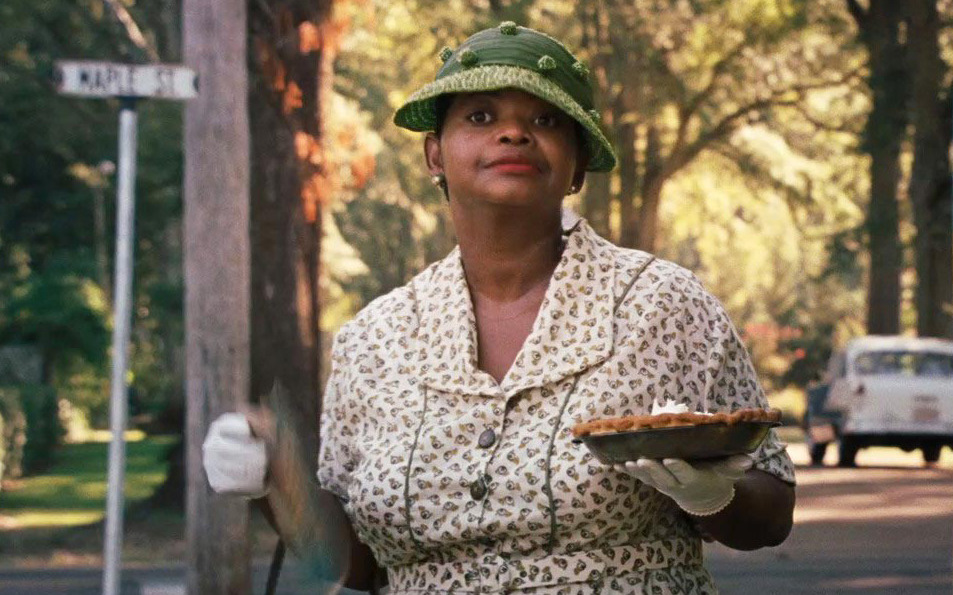 |
| This. |
13. The Girl with a Dragon Tattoo (not screened in 2011)
Rooney Mara's dedication earned her a surprise Oscar nomination. Her transformation from a waif-Hepburn-like damsel likely to appear in Vogue (and she did) to the disturbed-looking Girl with a Dragon Tattoo in the English adaptation of the Swedish novel was all the dedication her director could've asked for, getting several real piercings on her eyebrows, ears, nose, and lips for the film. And that's not the end of it, the brutal rape scene and the payback was so scarring and powerful that it made her a name. Sadly, talks of a sequel seems unlikely as of 2012 and we would have to look for Mara elsewhere in the future such as in Malick's future feature where she co-stars with Ryan Gosling.
 |
| The look of dedication. Bow. |
14. Source Code (not screened in 2011)
Anchored by Jake Gyllenhaal's performance and a dizzying scientific premise with a curious ending, Source Code was a breath of sci-fi fresh air. Michelle Monaghan was winsome while Vera Farmiga's portrayal of a stern but helpless scientist put at odds with a direct order puts the tension to could've become an exhausting affair otherwise. Maybe we should ask Taylor Swift?
 |
Just where the heck is Gyllenhaal? That's a mystery
that Source Code plays on |
15. Arthur Christmas (not screened in 2011)
I was wrong to judge Arthur Christmas as a holiday snoozefest, bent to cash in on kids' money. Within the first 15 minutes of this wonderful effort from Aardman Animation Studios, you'd be captivated by the animation film's natural charisma and surprising emotional depth and a new spin on the Santa folklore, which is fun for kids, and entertaining for adults.
 |
Arthur starts as annoying but ends up endearing and
resolute. |
16. Moneyball (not screened in 2011)
I am no sports fan, but Moneyball was made for me. It was a baseball story that works even for non-baseball fans with great performances from Brad Pitt and Jonah Hill. Though how Lenka's
The Show found its way to 2002 is beyond me. Based on the events that happened in 2002, Moneyball pairs Pitt and Jonah Hill to great effect. While Hill does not do his laugh out loud routine, he does provide a refreshing insight to Pitt's character, while Pitt provides the tough man / persistent coach role that turns the gears of the story. Interactions with Pitt's film daughter were also tender.
 |
| Kid performs Lenka's The Show in 2002 |
17. Insidious (previously number 9)
I have yet to see a movie as scary as Insidious. The winning direction by James Wan and the creep-out visuals perfectly timed makes Insidious the horror movie to beat of 2011. And to date, nothing commercially made has been as scary an affair as Insidious. Save for the shaky final act that felt too hurried, Insidious is beyond your normal scare affair.
 |
Whoever thought of this scene has a special place
reserved to him in hell |
18. Ang Babae sa Septic Tank (previously top 20 runner-up, no placement)
Chris Martinez and Domingo teams up for a movie about making a movie, Ang Babae sa Septic Tank. Featuring a fresh from Kimmy Dora success Domingo, whose starpower has suddenly become undeniable, Septic Tank became talk of town when Domingo, while filming, fell straight to the Septic Tank and shortly to the hospital for treatment of infection. It then became a runaway winner in Cinemalaya 2011. Storywise, Septic Tank is very thin, but the treatment of the film-in-a-film with superb performanced by Domingo, visualized in each treatment to showcase the difficulty of filmmaking is one that bears repeated viewings.
19. Hugo (not screened in 2011)
Maybe it's my fault that I didn't enjoy Hugo as much as others did because I know the sad story of how George Melies lost his films, and how he died after, and it wasn't as light and lovely as it is portrayed in Hugo. And maybe that took root too much that I carried it to the theatre. But just like
The Artist, Hugo is a loveletter to filmmaking, preservation, and restoration. Scorsese, for a change, tried his hand on a non-gangster family film with Hugo, and he arrived with something that has great cinematic depth. Asa Butterfield was fantastic in the film, and the pairing with Moretz was a great decision.
 |
| An homage to cinema, Hugo |
20. Thor (previously number 8)
Problem with superhero films is that they don't age well. I remember upon seeing Thor that I had so much fun watching it. It was a great vehicle for Hemsworth to ride on. Natalie Portman was great, too. And Tom Hiddleston was an effective villain. Brannagh's directorial chops were put to good use here as how he managed to reimagine Valhalla and the whole Thor mythology in place was just spot-on and not cheesy. Kudos to the great humanity Thor displayed through the movie, which is central to the film, and the ending, it makes you beg for more. On its original release, Thor was a risk that paid off. A daunting task that Brannagh and Hemsworth managed to deliver. But 12 months forward, it is overshadowed by other superhero films, particularly
The Avengers, making you ask, what was Thor about again?
 |
| Exploring Thor's humanity was a good call! |










